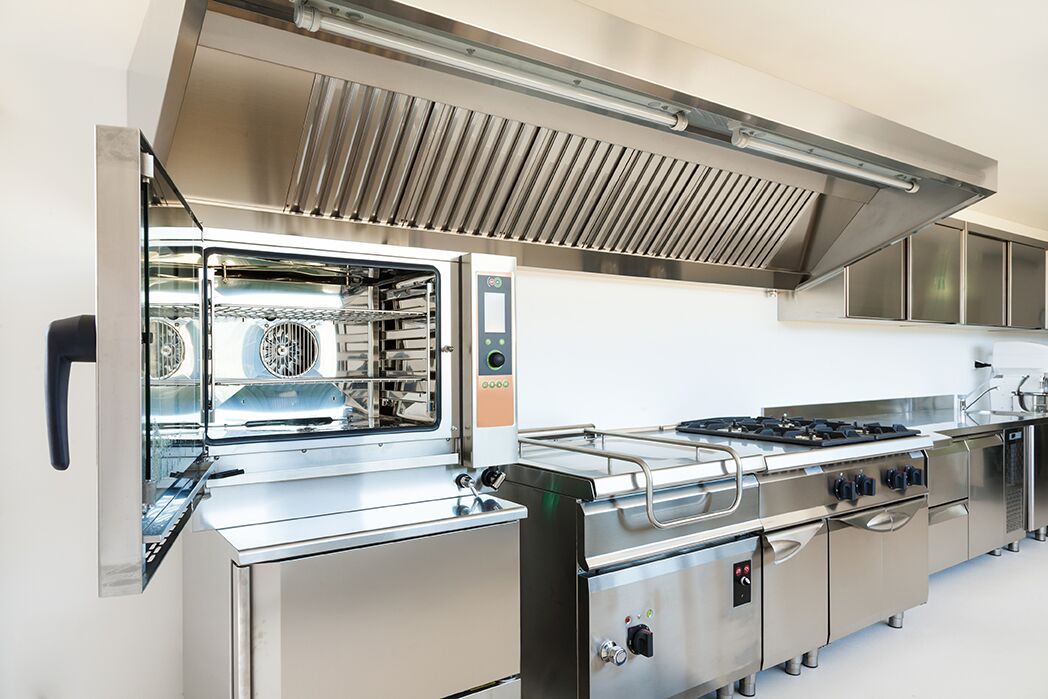Seven Steps to a certified Full Kitchen Clean
Hygiene and cleanliness is vital in the hospitality industry – never more so than in the current environment – and never more so than in the kitchen.
Commercial kitchen environments require commercial standard kitchen cleaning – for compliance, to reduce risk and provide you with peace of mind to protect your customers, staff and business.
Grease and dirt build up over time (not much time in some busy kitchens), covering surfaces and equipment, and can present not only a serious health risk but also a potential fire hazard.
Therefore, if not cleaned and maintained regularly, commercial kitchens can present a serious fire hazard and health risk due to an accumulation of grease and dirt.
A full kitchen and canopy clean by a certified cleaning professional will result in reduced fire and safety hazards, better efficiencies, and a sanitised work environment that meets Australian standards and leaves your business with a Certificate of Assurance.
Step 1: Engage trusted professionals
It is important to know, like and trust the organisation you’re partnering with for your commercial cleaning services. Ask yourself the following questions before engaging them:
- Are they experienced professionals?
- How long have they been in business and how long have they been providing these specialised cleaning services?
- How many venues do they service?
- Are they accredited and certified?
- Do they offer certifications for their services?
Beware of outsourcing your commercial cleaning to non-accredited and inexperienced service provider.
Step 2: Ensure the service is compliant
Be sure that all work complies with ISO 22000:2018 and ISO 9001:2015 covering a risk management system based on the principals of HACCP for the provision of specialised cleaning services to the hospitality and food sectors.
Step 3: What Certification is provided?
For peace of mind, and to protect your business, ensure that your commercial cleaning provider provides you with a Certificate of Assurance to certify any work undertaken.
Step 4: Be clear about the service inclusions
An extensive and detailed Full Kitchen Clean should include benchtops, sinks, canopies, kitchen exhausts, floors, wall and ceilings, extraction fans and filters.
Areas often forgotten during cleaning, but which also ought to be considered include:
- Gaps and spaces between walls and equipment
- Beneath appliances: cookers/fridges/freezers and other surfaces
- High shelves
- Drains and gullies
- Seals and fridge doors/shelves
- Filters and plenum chambers
- Ventilation systems
Step 5: Don’t forget important touchpoints and high traffic areas
An increasingly important cleaning and hygiene consideration for most businesses is high traffic areas and touch points. As the name suggests, ‘touch points’ are surface areas which are touched frequently, and they are typically considered to be under emphasised cleaning areas in general facilities, including kitchens, bathrooms and toilets. Wherever a staff member or customer uses a button, a latch or a knob, or turns on a light or fan, or opens a door, there is always a risk of spreading germs and disease. These areas can harbour more bacteria than a toilet bowl but are often overlooked in regular cleaning programs.
In the hospitality and food services businesses, some of the most common touch points include light switches, appliance and exhaust fan switches, door handles, taps/faucets, hand dryer buttons, soap or towel dispensers, and toilet flush buttons.
To clean these areas effectively:
- Spray surfaces with a high quality, food safe disinfectant
- Leave the chemicals to work for a few minutes, following the specific product directions for use
- Then thoroughly wipe the surface with a clean, dry cloth.
Step 6: Make sure your cleaning plan is site specific
The cleaning program for your commercial kitchen should be developed in consultation with a trusted, accredited cleaning professional. Consideration should be given to a number of factors including the size of your facilities, the nature of the equipment, volume of production, hours of operation, type of cooking being performed, and any requirements by the business owners or other determining authorities, as well as industry standards.
Step 7: Schedule cleans for appropriate frequency
Recommendations as to inspection and cleaning frequency of each commercial kitchen should be determined by a number of factors such as:
- cooking volume,
- hours of operation,
- type of cooking being performed,
- requirements of owners or other authorities.
But as a general guide:
- Surfaces and utensils: after each use
- Sinks: between uses, and at various points throughout the day if used frequently
- Ovens: weekly
- Bins: weekly
- Fridges and freezers: every 3 – 6 months
- Cold storage and cool rooms: every 3-6 months
- Floors, walls and ceilings: every 3 months to 1 year
- Ventilation systems such as canopies exhausts, extraction filters: every 3 months to 1 year (depending on use)
These timeframes are only general guidelines. There may be times when surfaces, equipment or appliances need to be cleaned more frequently.
Jaymak – your trusted professionals in certified cleaning
Jaymak is also the only ISO 22000 certified company for specialised cleaning services to the hospitality and food service sectors in Australia. Trusting your commercial kitchen cleaning needs to Jaymak will result in better energy and appliance efficiencies, reduced fire and safety hazards, and a sanitised work environment that meets Australian standards.
Book a free consultation with one of our expert technicians who will be able to answer any questions you may have and provide an obligation free quote or learn more about all of our products and services.
Comments are closed.

